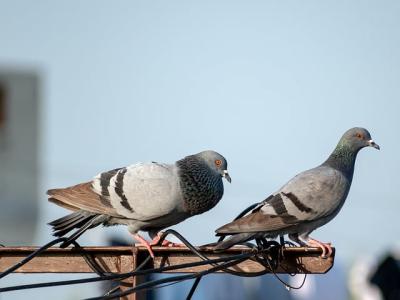A new build warehouse in East London has the potential to encourage a major roosting problem with feral birds.
The site
The warehouse’s large loading area is open on two sides to allow access, air and light into the building. The roof space is filled with a maze of pipes and cable trays, and the whole layout is mirrored on a second floor.
The problem
Pipes and cable plates make ideal places for feral birds such as pigeons to roost and nest. It takes very little for a pigeon to build a nest, often nothing more than a few sticks.
To make matters worse, the new site is built on reclaimed land between three landfill sites. Due to the abundance of food available at landfill sites, they often attract all kinds of pests.
So, the new site offers multiple, sheltered roosting opportunities, warmth from the pipes in winter and it is situated near sources of food. Taken together, this all makes it an ideal residence for birds.
Solution
Cleankill’s bird control team is already active at this large site. They regularly fly their Harris hawks to disturb and move on any birds thinking about making this site their home. However, since the new building offered such an abundance of roosting opportunities, and flying the hawks in a busy, semi-enclosed area would be dangerous for the birds, this technique could not be employed inside the new facility.
Luckily, the owners of the new building thought ahead and called in our team to see what could be done. Following an exhaustive survey of the site, it was recommended that the best course of action would be to net all of the roof space to stop potential roosting. The netting denies pigeons access to the pipes and cable trays by creating a physical barrier. This is a very large area and, because this is a pristine new build site, the work had to be carried out to highest standards.
We sent a team to the site who netted the complete roof spaces on both floors. They took care to ensure the square pattern on the netting exactly matched the walls and piping, to give a pleasing and professional look. The netting was also properly tensioned to reduce the possibility of damage and stop the possibility of birds becoming accidentally trapped.
The result is a site where the roof spaces are now protected and, with continuing visits by the falconry team, birds outside of the buildings are encouraged to move elsewhere in an environmentally friendly way.
Watch a video made by Alan from the falconry team as he inspects the site before its opening.
Image by Rajesh Balouria from Pixabay
